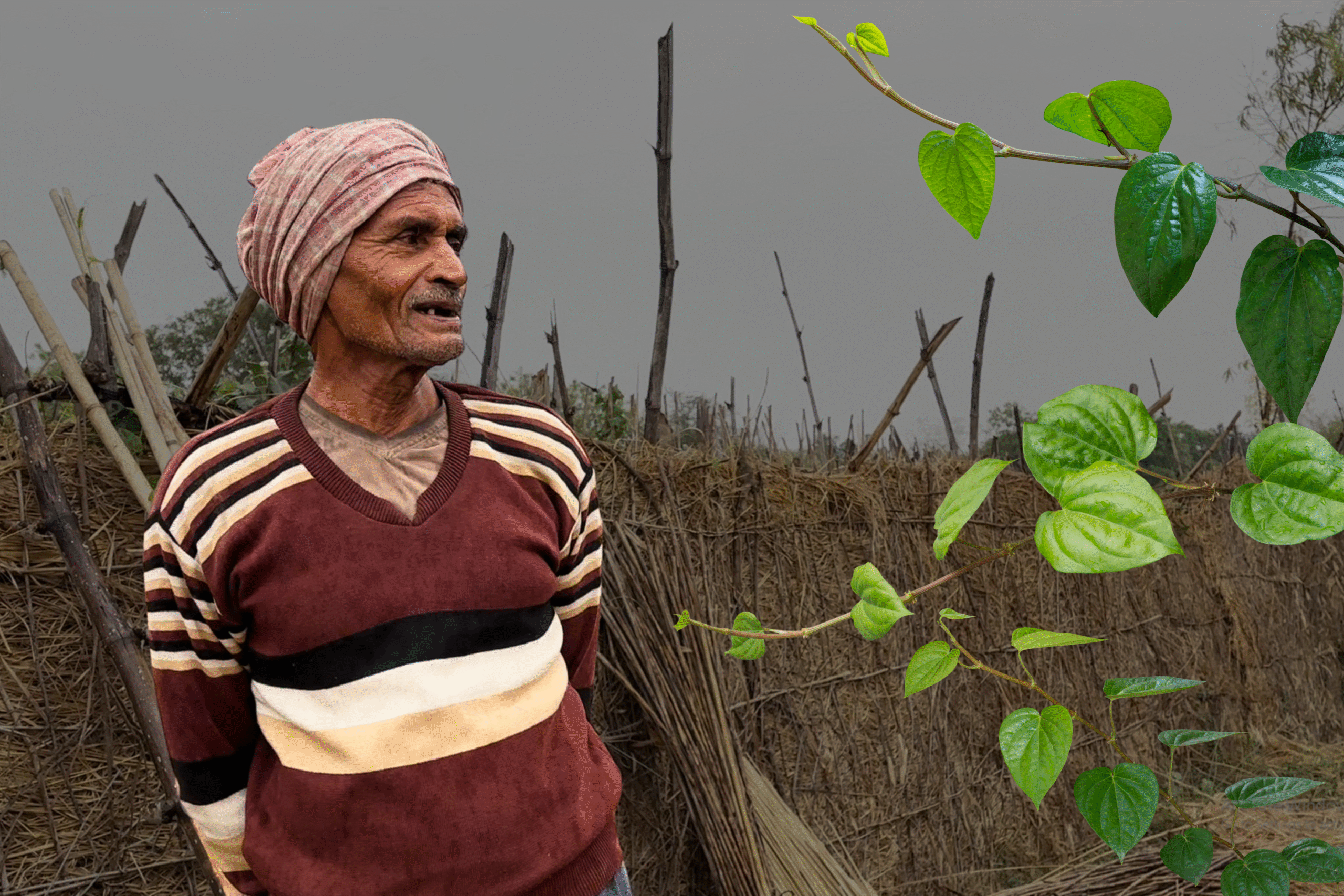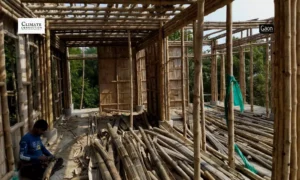Bharatpur (Bankura), West Bengal
Sanghita Mitra has provided Bengal’s folk art of Patachitra a new lease of life and its practitioners, the patua, fresh hope. The patuas in Bharatpur village, where 18 families of traditional artists live, are now breathing easy thanks to the 40-year-old who quit her job with a software company and has been working with the folk artists.
Bharatpur is located 220 kilometres from the state capital Kolkata and is known for the Patachitra art. For about ten years now, Mitra has been closely working with the artists in the village in Chhatna block of Bankura district. They belong to the marginalised OBC (other backward class) community.
She not only promotes their Patachitra art by linking them to fairs where they can showcase and sell their art works, but also helps them access various government schemes, including an assured monthly stipend of Rs 1,000 each from the West Bengal government.
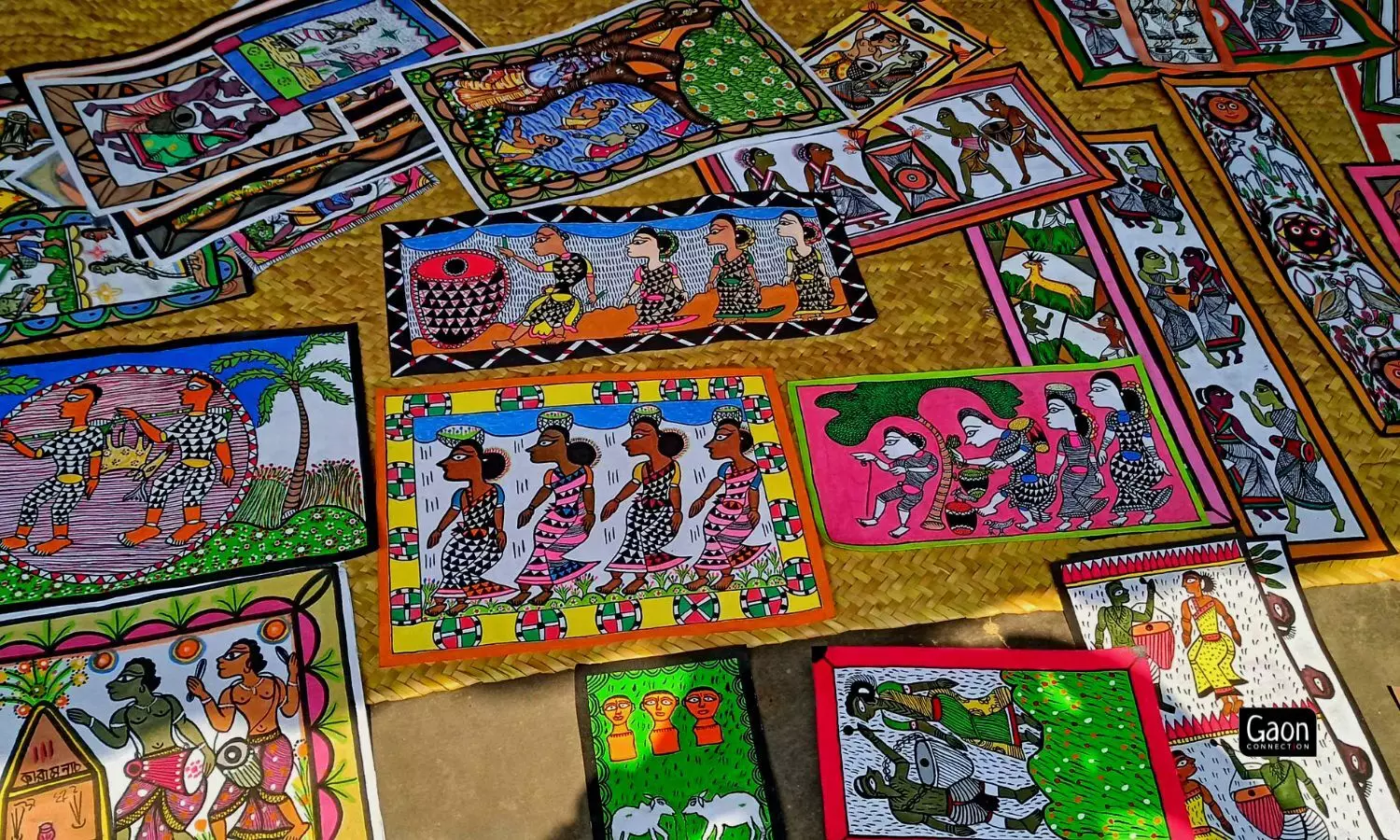
The patuas in Bharatpur village where 18 families of traditional artists live are now breathing easy thanks to the 40-year-old who quit her job with a software company and has been working with the folk artists.
“Most of us struggled to eat a square meal a day till Sanghita didi came to change our lives,” Sambhu Chitrakar, a patua from Bharatpur, told Gaon Connection.
It is believed that Bengal’s Patachitra art dates back to the thirteenth century. The origin of the patua artists in Bharatpur and the surrounding areas dates back more than a 100 years when Kalicharan Chitrakar from Kalipahari village, about 20 kms away, decided to settle here. The 18 patua families claim to be his descendants.
“Kalicharan Chitrakar was an artist and he began to document the life and times of the Santal tribal community in his paintings, and then described what he had painted through songs,” Sahadeb Chitrakar, the 72-year-old grandson of Kalicharan Chitrakar, told Gaon Connection.
The tradition of the pata images being described through song still continues in Bharatpur. The patua paint stories on paper or thin cloth (pata). Most of the Patachitra artists still use natural colors available in the area.
Due to neglect, the traditional art form has been on a decline and patua barely make the ends meet. Sanghita Mitra has infused energy into the ancient art form, say the grateful patua of Bharatpur.
“I could never forget how poorly the Patachitra artists lived. After I quit my job, I went to Bharatpur village, saw how I could help improve their lot and began working with them,” Mitra told Gaon Connection.
She lives in Bankura town, but her ancestral home is Susunia village, not too far from Bharatpur. She did her schooling there and then, after her graduation from Bankura Sammilani College, she moved to Kolkata in 2005 where she completed a course in digital visual communication, graphic, and web-centric computing.
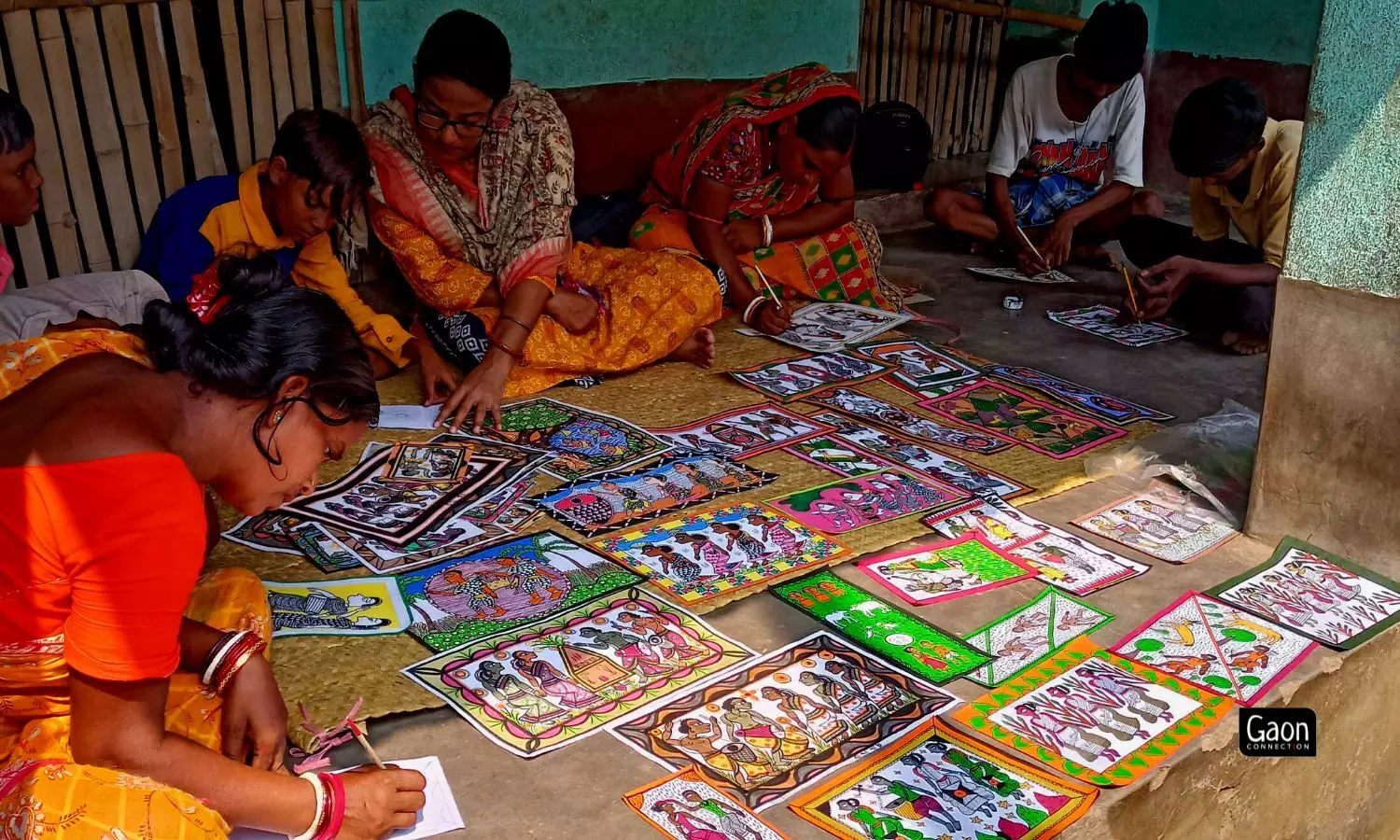
The tradition of the pata images being described through song still continues in Bharatpur.
Mitra worked at a software company but quit it in 2013 and decided to work with the Patachitra artists. She received support from her father, a retired high-school teacher, and her husband, a railway employee, to walk the new path in her life.
Also Read: Colours of Communal Harmony in West Bengal’s Pattachitra Art
“We still do what we traditionally did, but now we do not starve and our families eat well, our children go to school and we live comfortably,” said a grateful Sambhu Chitrakar, another patua from Bharatpur.
“Our Patachitras are now given as mementos to dignitaries in official functions. And we are able to sell them for anything between Rs 300 and Rs 1,200 each,” Ananda Chitrakar said proudly.
Bharatpur village also boasts of a Common Facility Centre set up by the Khadi and Village Industries Commission.
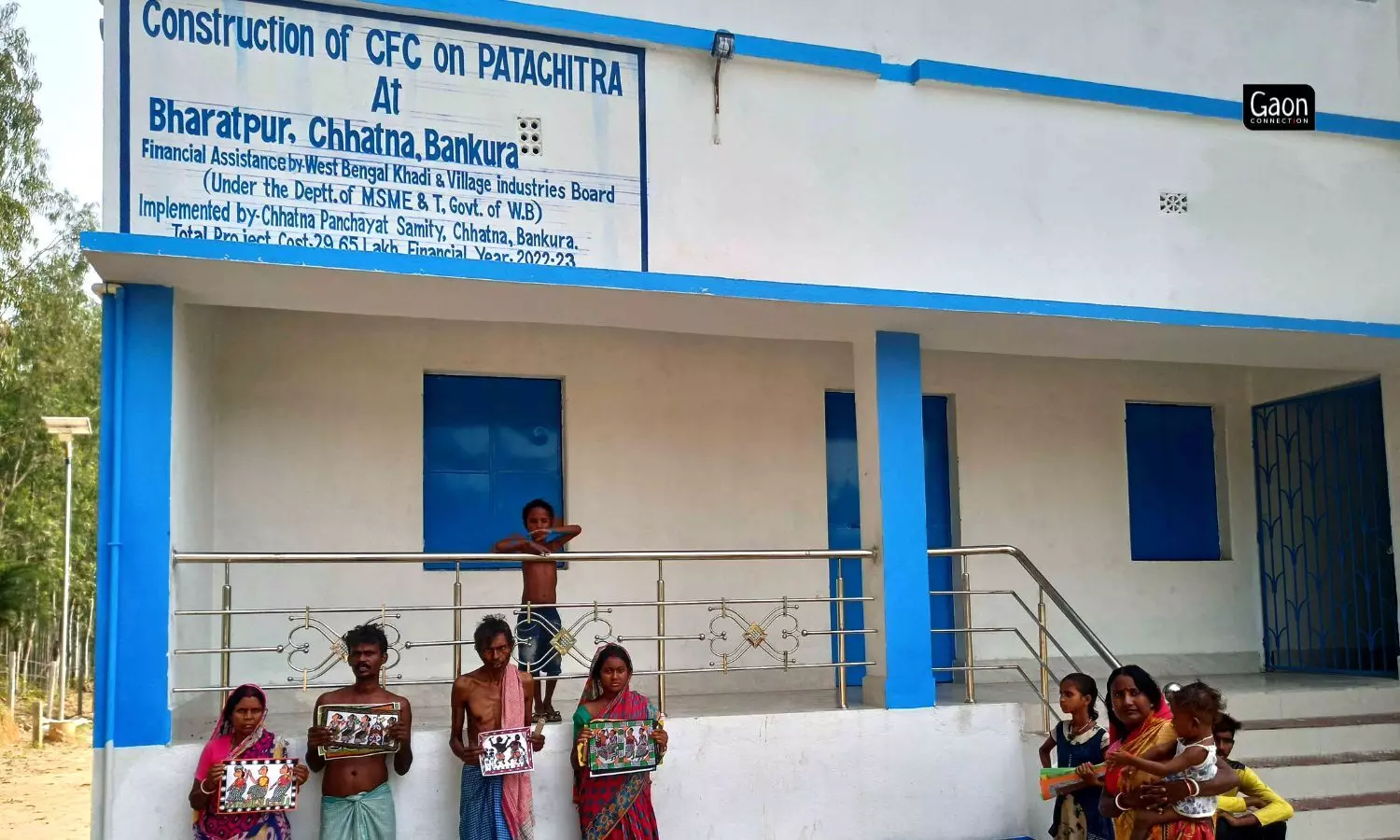
Earlier, the income for the artists was sporadic at best. Sometimes if they were lucky they would make Rs 300 to Rs 400, at other times nothing.
“About 30 lakh rupees have been spent to set up the common facility centre where artists can practise their art and also exhibit and sell their paintings to visiting tourists,” Paresh Pal, District Officer of West Bengal Khadi and Village Industries Board, told Gaon Connection.
Earlier, the income for the artists was sporadic at best. Sometimes if they were lucky they would make Rs 300 to Rs 400, at other times nothing. Now they get an assured artist stipend of Rs 1,000 per month from the state government.
“And with their income from fairs and from selling to tourists at the common facility centre, some of them earn up to Rs 50,000 a year,” said Pal.
Thanks to Mitra’s efforts, houses have been built for the 18 patua families in Bharatpur village by the Chhatna block administration.
“Eighteen concrete houses have been built on government land for the Patachitra artists at the cost of 70 lakh rupees. The Chhatna Block Administration has also provided electricity, streetlights, fans for the homes,” Sisutosh Poramanik, the Block Development Officer (BDO) of Chhatna Poramanik, the BDO, told Gaon Connection.
Mitra struggled to bring to attention the plight of the patua community of artists. She kept BDO Poramanik apprised of their condition and that yielded positive results.
“I saw so many of the artists had given up painting, and that was so sad. I decided to encourage them,” said Mitra.
“Sanghita didi told us that we should not stop painting and that she would provide us with paper, cloth, brushes, and colours needed for our art. She used to visit us four days a week and encouraged us,” narrated Sambhu Chitrakar.
Mitra ensures the Patachitra artists take part in workshops at Bankura and Kolkata.
“Patachitra artists are actively promoted in government sponsored fairs across the state,” said BDO Poramanik. He also added that necessary paperwork and information was sent to concerned authorities to obtain a Geographical Index (GI) tag for the Bharatpur Patachitra.
Also Read: The heritage village of Odisha where every single resident is a pattachitra artist
A re-energised art form
Women who did not traditionally do the painting are now doing it. “Earlier, women did not draw Patachitra. Now we draw the pat. Our paintings are sold,” said Golapi and Sumita Chitrakar, two women artists in Bharatpur. And children are being encouraged to practise the art form too.
Most of the Patachitra still use natural colors available in the area. The yellow comes from raw turmeric, green from the juice of beans and kundri (a kind of vegetable) leaves, purple from Malabar spinach seed (locally called Puinshak mechuri), red from aalta (which women use on their feet), and black from charred wood.
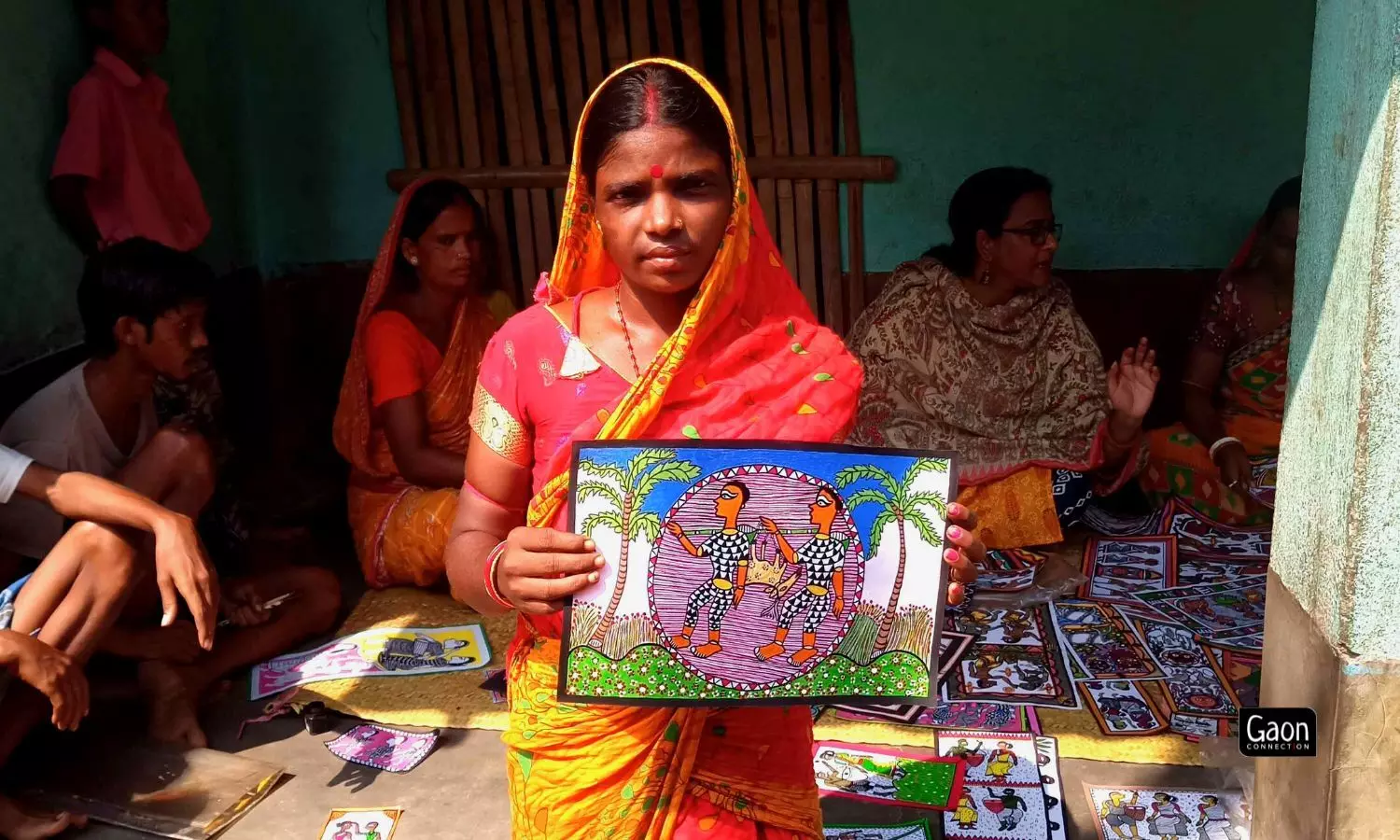
Women who did not traditionally do the painting are now doing it. Earlier, women did not draw Patachitra.
In the past, the artists went door to door showing the stories they had painted and singing them out, and got paid for their efforts with rice, potatoes, and sometimes a little money.
But now, while the patuas continue to move from village to village, singing stories and showing their paintings, they live better, eat better and can concentrate on keeping the art form alive, thanks to Mitra’s unceasing support.
“As the daughter of Bankura, it is my duty to keep the art of Patachitra alive. It gives me immense joy to see how the artists have regained confidence,” said Mitra. If efforts are not made to encourage, sustain and patronise traditional art, it will disappear.
“We all want the next generation to continue with Patachitra art,” she concluded.







